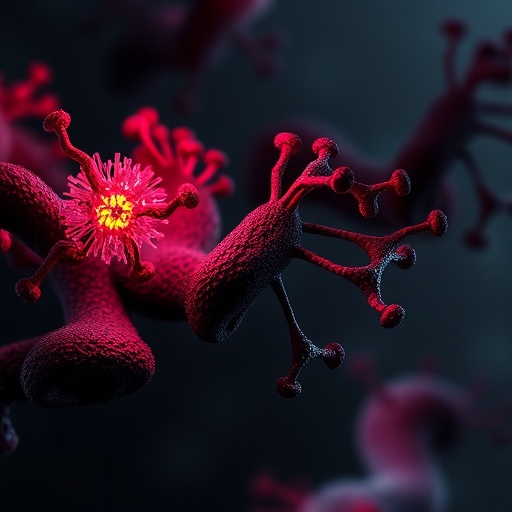Collaboration includes Penn Medicine, Annenberg School for Communication, The City of Philadelphia department of public health, and Philly Counts

Credit: Penn Nursing
PHILADELPHIA (May 19, 2021) – José A. Bauermeister, PhD, and Antonia M. Villarruel, PhD, are leading one of 10 new research teams from across the country that received National Institutes of Health (NIH) grants totaling $14 million to extend the reach of the NIH’s Community Engagement Alliance (CEAL) Against COVID-19 Disparities. The Philly CEAL team was awarded $1.4 million from the NIH with additional support from Penn Nursing and The University of Pennsylvania, bringing the total for the alliance to $1.53 million.
“The toll of the pandemic among racial/ethnic populations in Philadelphia cannot be understated. Alongside the stark morbidity and mortality COVID-19 estimates reported by the city, racial/ethnic minorities in Philadelphia have also been most likely to experience job loss, income reduction, and decreased access to social resources,” said Bauermeister, the Albert M. Greenfield Professor of Human Relations and Chair of the Department of Family & Community Health. “As a result, we have witnessed deepening health inequities in our communities. The Philadelphia CEAL project is an opportunity to coordinate evidence-based planning efforts to address COVID-19 inequities in Philadelphia.”
CEAL’s mission is to create a multisectoral coalition in Philadelphia focused on identifying opportunities and evaluating on-going COVID-19 strategies to mitigate disparities across COVID-19 testing, vaccine uptake, and therapeutics. Together, the Philly CEAL team will propose and evaluate strategies that meet the needs of people hardest-hit by the COVID-19 pandemic, including African Americans, Hispanics/Latinos, Asian Americans, and American Indians/Alaska Natives, with the goal of building long-lasting partnerships as well as improving diversity and inclusion in our research response to COVID-19.
“We are excited to be working with the City of Philadelphia Public Health Department, Philly Counts, our partners across Penn including Penn Medicine and Annenberg School for Communication, and community members,” said Villarruel, Professor and Margaret Bond Simon Dean of Nursing. “We will work to synergize efforts to address the disproportionate impact of COVID 19 on underserved communities.”
Over the next year, CEAL researchers will work with community leaders, trusted organizations, and experts familiar to diverse communities across Philadelphia to strengthen a local response to COVID-19. Philly Counts will help provide materials and support to the grantees to ensure the greatest impact on communities. As teams within the CEAL Alliance personalize these outreach strategies, they will also share their findings with each other and the broader community of those working to move the country past the pandemic.
Using collected data from Philadelphia residents, city epidemiologic data and trends, and feedback from communities, the Philly CEAL team will propose programs that align with the needs of the community, synergize existing efforts across the city, and evaluate new COVID-19 initiatives as they are rolled out in Philadelphia.
In alignment with the City’s goal to vaccinate Philadelphians against COVID-19, the Philly CEAL coalition’ efforts will facilitate access to COVID-19 testing and vaccines, as well as promote participation in COVID-19 therapeutic trials among underserved communities in the region. “The use of community engaged research is central to the success of our project. We must be ready to bring to the table leaders from the community, healthcare systems, community health and social support agencies, the private sector, universities, faith-based institutions, philanthropy, and policy and advocacy groups. With their voices and support, we can continually pivot and respond to the shifts in the pandemic, and consider its short- and long-term impact in our community,” said Bauermeister.
CEAL is an NIH-wide effort co-led by the National Institute on Minority Health and Health Disparities (NIMHD) and the National Heart, Lung, and Blood Institute (NHLBI).
###
About the University of Pennsylvania School of Nursing
The University of Pennsylvania School of Nursing is one of the world’s leading schools of nursing. For the sixth year in a row, it is ranked the #1 nursing school in the world by QS University and is consistently ranked highly in the U.S. News & World Report annual list of best graduate schools. Penn Nursing is ranked as one of the top schools of nursing in funding from the National Institutes of Health. Penn Nursing prepares nurse scientists and nurse leaders to meet the health needs of a global society through innovation in research, education, and practice. Follow Penn Nursing on: Facebook, Twitter, LinkedIn, & Instagram.
About the Annenberg School for Communication
Founded in 1959 through the generosity and vision of diplomat and philanthropist Walter Annenberg, the Annenberg School for Communication at the University of Pennsylvania is devoted to furthering our understanding of the role of communication in public life through research, education, and service. With strengths in health communication, political communication, culture and communication, media institutions, digital media and social networks, and global communication, the Annenberg School is one of the top Communication schools in the nation.
About Penn Medicine
Penn Medicine is one of the world’s leading academic medical centers, dedicated to the related missions of medical education, biomedical research, and excellence in patient care. Penn Medicine consists of the Raymond and Ruth Perelman School of Medicine at the University of Pennsylvania (founded in 1765 as the nation’s first medical school) and the University of Pennsylvania Health System, which together form a $8.9 billion enterprise.
The Perelman School of Medicine has been ranked among the top medical schools in the United States for more than 20 years, according to U.S. News & World Report’s survey of research-oriented medical schools. The School is consistently among the nation’s top recipients of funding from the National Institutes of Health, with $496 million awarded in the 2020 fiscal year.
The University of Pennsylvania Health System’s patient care facilities include: the Hospital of the University of Pennsylvania and Penn Presbyterian Medical Center–which are recognized as one of the nation’s top “Honor Roll” hospitals by U.S. News & World Report–Chester County Hospital; Lancaster General Health; Penn Medicine Princeton Health; and Pennsylvania Hospital, the nation’s first hospital, founded in 1751. Additional facilities and enterprises include Good Shepherd Penn Partners, Penn Medicine at Home, Lancaster Behavioral Health Hospital, and Princeton House Behavioral Health, among others.
Penn Medicine is powered by a talented and dedicated workforce of more than 44,000 people. The organization also has alliances with top community health systems across both Southeastern Pennsylvania and Southern New Jersey, creating more options for patients no matter where they live.
Penn Medicine is committed to improving lives and health through a variety of community-based programs and activities. In fiscal year 2020, Penn Medicine provided more than $563 million to benefit our community.
Media Contact
ED FEDERICO
[email protected]
Original Source
https:/




